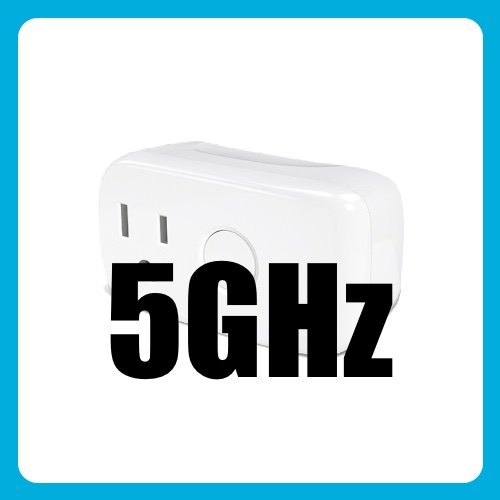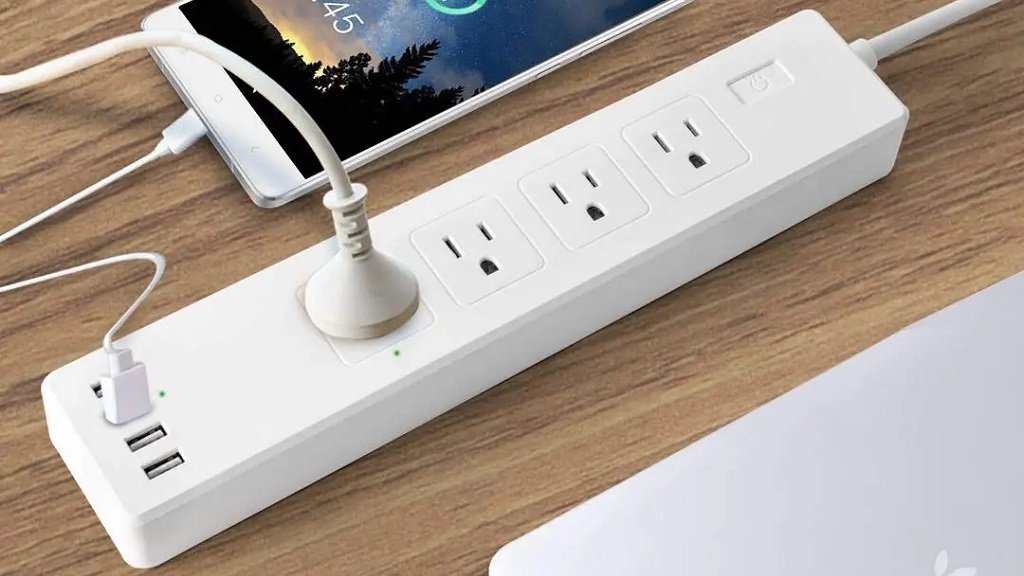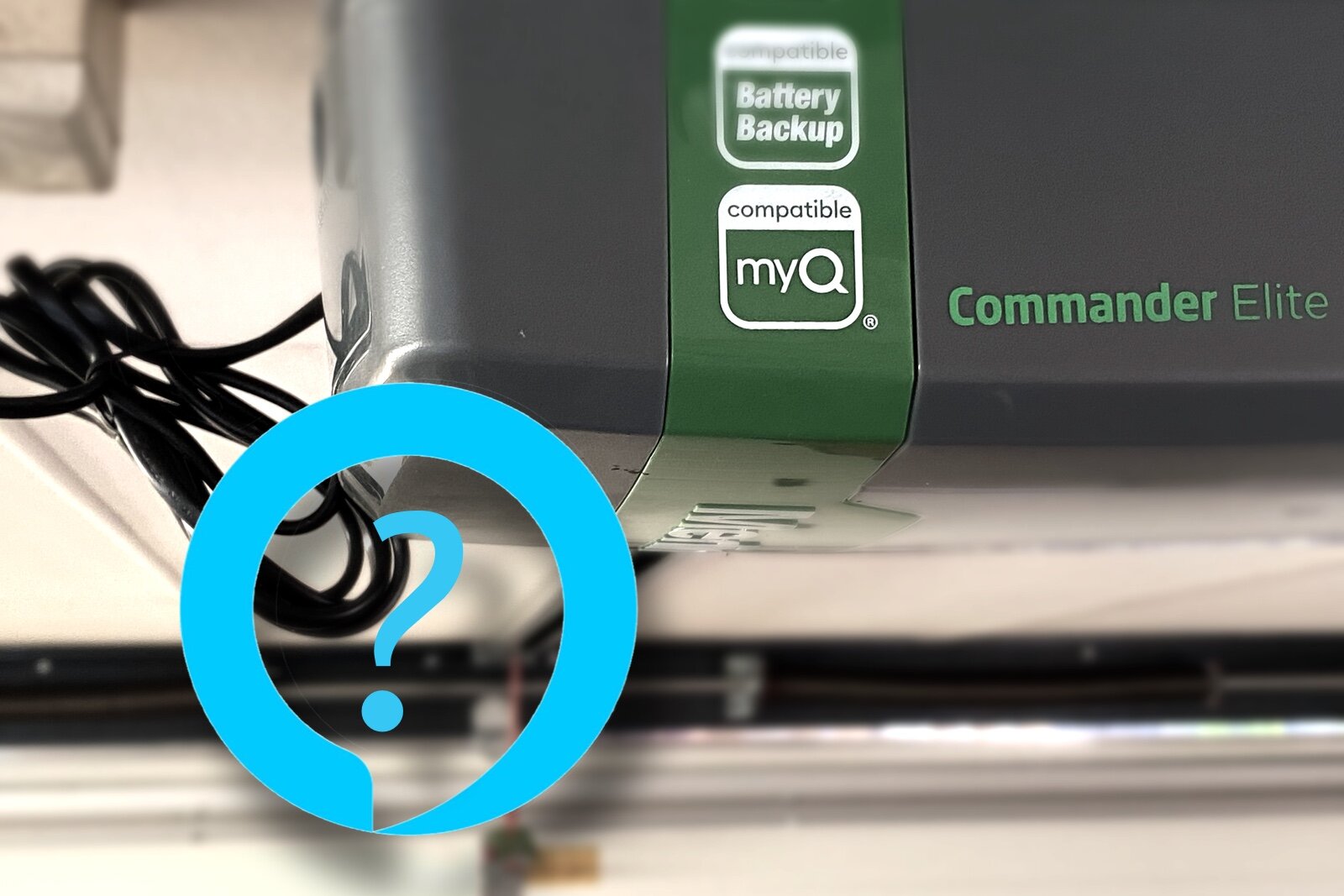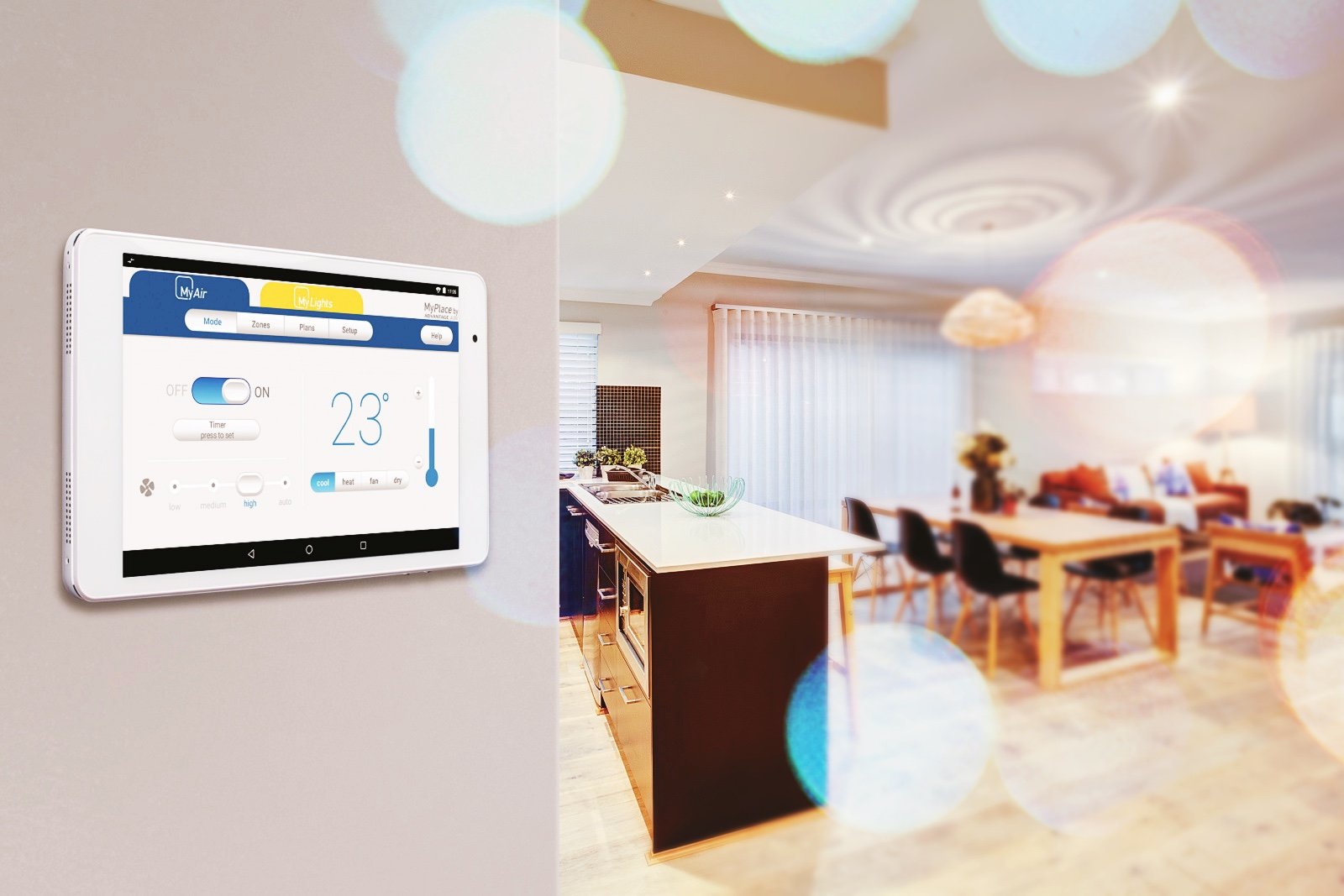
Complete Guide To Smart Plugs
One of the most basic smart home devices is the venerable smart plug. These devices provide remote control over the on/off state of any electrical device and have been useful for automating things like lamps, pumps, appliances, fans and so forth. This complete guide will explain how they work, what features to look out for, and precautions to take with both electrical and data safety.
In This Guide
What Are Smart Plugs?
A smart plug is an electrical device that sits between a wall socket and an electrical appliance that allows power to the appliance to be turned on and off remotely. The term ‘smart’ refers to the inclusion of a radio connection of some kind that allows the plug to be controlled via software. This can be a digital assistant, a smart phone app, or a remote control of some kind, although the latter is not common. Some smart plug models also have on-board software that can be programmed with timers and schedules.
Benefits of using smart plugs
Smart plugs have typically been used to add smart remote control to otherwise ‘dumb’ appliances and other electrical devices. There are various reasons for this ranging from simple convenience to improvements in energy efficiency and home security. In many cases a smart plug is a simple and cost-effective solution for adding automation to simple electrical devices where you otherwise wouldn’t be able to.
Many smart plugs provide an energy monitoring feature. This can be used to help understand the energy consumption of certain appliances and their usage patterns over time. With this knowledge homeowners can potentially change their behaviors to make better use of off-peak energy rates, solar production, or cut down particularly energy intensive activities.
Combining smart plugs with other smart devices can also yield helpful combinations. Turning on a home entertainment system and closing smart blinds at the same time, for instance. Being able to control these plugs by voice commands can also be very useful, especially if they are hard to reach or if you need to use them at times when you’re often busy, such as preparing a meal.
How Smart Plugs Work
A smart plug will need to have some kind of radio connectivity in order for it to be ‘smart’. This radio receives the command to turn on or off from a compatible app or smart home controller and passes that command to a relay. The relay is an electronic switch that physically connects or disconnects the electrical supply from the output socket. It is this relay that makes the click sound usually associated with smart plugs.
A button will usually be provided on the casing of the smart plug to allow for manual control of the power flow as well, the state of which will be shown with some form of LED indicator so you can visually tell if the smart plug is in an on or off state.
Compatibility with voice assistants
While all smart plugs will be controllable via an app on your smart phone, many will also support one or more voice assistants and smart home platforms. The voice assistant adds a significant level of convenience, and the underlying platform provides the means to configure automation rules and integrate the smart plug with other smart devices for more complex and powerful scenes and actions.
Amazon Alexa is the most common compatible voice assistant, followed by Google Assistant and Apple’s Siri. Typically, each device manufacturer will need to provide software support for each voice assistant separately. But the new Matter smart home standard hopes to provide a single unified interface that all smart home platforms can use to connect to any given smart device. Smart Plugs were one of the first device types to be supported, and several products are now available with this broader compatibility built in.
Choosing the right connectivity
The radio connectivity you choose mostly comes down to what you want to use the smart plug with. There are various common protocols in use with different requirements for being able to connect to them.
Wi-Fi - The most commonly available protocol, a smart plug that uses Wi-Fi can be used in any eco-system and can work without a smart home platform at all, just the maker’s app. The ubiquity of Wi-Fi as a means of connecting to the internet also makes these the most vulnerable devices to cyber-attack, and managing a large number of Wi-Fi smart plugs on your home network can become a headache. Almost all smart plugs only support 2.4GHz Wi-Fi, but there are some that work with 5GHz as well.
Bluetooth - Also commonly available and compatible with any smart phone, Bluetooth provides another hub-free option for controlling smart plugs. Short range and a lack of always-on connectivity makes this a fairly limited option, however. It’s really only used as an introductory option for people without a smart home set up yet, or who don’t plan to go any further into smart tech.
Z-Wave - An older internet-of-things protocol that still is in common use. Z-Wave provides more resilient communications thanks to the use of a lower frequency range than other protocols, as well as its built-in mesh networking capability. Z-Wave requires a dedicated controller to act as the central hub of a Z-Wave network and is complicated by the need to have region specific radio frequencies.
ZigBee - A newer internet-of-things protocol, ZigBee offers faster data rates, larger networks, and more device diversity. It also uses the same 2.4GHz frequency range as Wi-Fi allowing it to be globally available without any region locking issues. A Zigbee hub will be required to connect to ZigBee devices, but this now included in some smart hubs and speakers like Amazon Echo devices and Eero routers.
Thread - A derivative of ZigBee, Thread is the newest protocol to come to the smart home. Thread provides a more robust and scalable self-healing mesh network that is also IP addressable, meaning it can be used with other internet connected network without special handling. This combination of features has made it the protocol of choice for lower powered devices in Matter, alongside Wi-Fi for maximum compatibility. Thread requires a compatible border router to connect it to your home network. These are available from all major smart home platforms now.
Types Of Smart Plugs
Single Socket Smart Plugs
These are the most common type. They are a simple one-to-one smart adapter - one socket to one appliance. US style smart plugs are now usually a compact design that doesn’t block adjacent sockets, but other socket types are often still somewhat bulkier and can have this problem.
EVVR Smart Plug - This single adapter smart plug takes a different design approach and places the bulk of the device in-line on a short cable. The wall socket only needs to take a standard plug, keeping any potential conflict with adjacent sockets or power bricks out of the picture. Energy monitoring is included, and you can configure the power-recovery behavior and disable the manual control button for safety.
Multi-socket Smart Plugs
A good way to overcome potential crowding issues with smart plugs is to make all the sockets smart. You can do this either with in-wall smart outlets or a smart power strip or power board. There are models available for various socket types and platforms in many countries, but the selection of supported smart home system is more limited. Essentially multiple smart plugs in a single unit, each one can be controlled individually making for a more effective choice where multiple smart plugs are required.
Outdoor Smart Plugs
Most smart plugs are not rated for outdoor use. If you need something that can handle the elements, you’ll need to look for an outdoor model specifically. These often provide two smart outlets from a single outdoor socket.
Jadada Smart Power Strip for Alexa
The Wemo Outdoor Smart Plug
Remote Control
The most commonly sought feature for smart plugs is the ability to control them remotely. This is the primary function of these types of devices, so you won’t have any trouble finding this feature - they all have it in some form. All smart plugs will have app control, either through their own first-party app or via a smart home platforms app.
Remote control is what allows you to send commands to the smart plug from anywhere, and also through automation rules from your smart home. These rules are where smart plugs really shine and provide a much greater depth of utility and convenience than just manually telling them to turn on and off.
Schedules and Timers
Some smart plugs will include built in functions for creating timers and schedules. These allow you to specify when a plug should turn itself on or off, and for how long. These can be useful for autonomous behaviors like controlling a lamp to simulate someone being at home, but are far less flexible than using automation rules through a smart home that can control a wider variety of devices at once, and in response to sensor inputs for more dynamic behavior. As such, these built in functions are mostly useful for those who won’t be building out a more comprehensive smart home.
Energy Monitoring
Energy monitoring is a popular feature than allows the smart plug to measure and log the power flowing through it. This data can then be viewed but as individual events and a graph over time. The insights this can provide can inform more efficient use of high consumption appliances by reducing their usage or time shifting that usage to lower cost times of the day.
While the availability of this data doesn’t directly do anything to improve your power usage, simply having visibility of it can be a powerful motivator for changing behavior and better planning how you use energy in the home.
Voice Control
Good voice assistant control can be a very useful feature. This goes beyond just being able to turn on and off the smart plug as this is the basic functionality you would expect. A good voice assistant is more about the ability to recognize what smart plug you are referring to in the context of your command. Getting the wrong device, or mis-interpreting the instruction can be extremely frustrating, especially if it turns off the wrong thing.
You’ll want a smart plug that allows you to use natural language to refer to it rather than requiring a very specific command phrase as some smart devices do.
Smart Home Compatibility
Along with voice control you’ll usually require support for the underlying smart home platform. Of course, not all smart home platforms have their own voice assistant, so it’s not a one-to-one thing. Platforms like Amazon Alexa, Apple Home, and Google Home all provide their own, while more other home hubs like Athom Homey or Home Assistant can leverage any of these.
The choice of smart home platform can come down to your preference for voice assistant, but it should be more about the capabilities of that system in terms of its user experience, automation capabilities, and breadth of supported device functions (rather than number of supported devices). Good smart plugs can be obtained for pretty much any platform and communication protocol you need.
Safety Features
Electrical safety can’t be overlooked when looking around for smart plugs. You’ll need to be sure the build quality of the plug is robust. There have been cases of smart plugs coming apart and exposing high voltage components that could be touched, or poor design creating a fire risk. Choosing models with some form of overload protection can also be useful, as can be some form of child safety features like child locks or interlocking internal covers to prevent foreign object being inserted.
Key Features to Consider
Factors To Consider When Buying
Compatibility with your devices
If you’re looking to add smart plugs to a broader smart home, then device compatibility comes down to what works with your platform rather than the smart plug itself. However, many smart device makers like to provide their own smart home experiences in their first party app. If you’ll be using that then making sure it supports other device types you want to use will be a consideration.
Without that compatibility you’ll only be able to use the smart plug on its own, and not as part of more complex scenes or automation rules. This will limit the utility of the device considerably. Using a first party app will likely limit you to only the devices that brand makes, which will always be much more restrictive than going for a more open platform.
Connectivity range and strength
Aside from Bluetooth, most smart home protocols have similar usable ranges in most domestic settings. All radio protocols are impacted to some degree by interference and obstructions, but mostly in similar ways. You can expect reliable operation of your devices on any connectivity type out to about 100ft (30m). You can certainly go further but it becomes much more situation specific.
Using IoT protocols or a mesh Wi-Fi router will allow you to easily extend that range through additional mesh nodes or router-capable devices that also use that system. This means if you need to place a smart plug at the far end of the house, or even outside, there will be things you can do to ensure it will work well.
App features
Many device maker’s apps will be considerably less mature and feature rich than major smart home platform apps. If you won’t be using a smart home or voice assistant for the majority of your control, you’ll want to pay more attention to what the first party app experience is like. You’ll be using this a lot more, after all, and some of these apps are downright bad.
You’ll want to look at what the login process is like and how often it requires you to do it, how the layout of the device list feels and if it can be customized well, what the energy monitoring screens look like and how useful their presentation is, and what options you have for configuring device behaviors and doing general maintenance tasks.
Brand reputation
We’ve looked at app experience and build quality already, and these things factor heavily into brand reputation. The other important pillar here is support. Are you looking at a cheap knock-off brand? Don’t expect any support in that case.
What about returns? Warranty coverage? You’ll always be better off with a reputable brand name on all of these counts. Brands like Lutron or Eve Systems will cover these aspects very well.
Budget and pricing
Smart plugs can be had for very low prices these days, as low as $9, but you get what you pay for. The cheapest options will get you no support, poor reliability, and possible dangerous levels of build quality. Going middle of the road will usually be a safe bet but will also likely leave you with limited platform support choices. It may be worth paying a bit more to get all the features and device support that you might want in the future. Good quality brands will run between $25 and $40 depending on features.
Smart Plug Use Cases
Smart Lighting Control
Smart lighting is another big category of smart home devices that is certainly worth getting into, so why would we need smart plugs here? Primarily the reasons would be if you floor or table lamps that you don’t want to spend money on or that you can’t make into smart lights.
Ornamental LED lamps that don’t have replaceable bulbs, or things like lava lamps, can be made smart by adding a smart plug. You may simply not want to spend the time and money on retrofitting a lamp with smart bulbs, in which case a cost-effective smart plug can do the job easier, especially if the lamp has multiple bulbs.
Home Entertainment Control
If you want to automate an older home entertainment setup, you can do this with smart plugs that can turn on the various pieces of equipment at once with a single voice command or button press. You can combine this with smart plugs on lamps and fans to turn those off (or on) as required, and with other smart devices like light strips or blinds as part of a wider home theatre scene.
Energy Efficiency
Beyond the energy monitoring functionality of many smart plugs, using them to actively take control of your power usage can be more helpful. Turning on a dryer after off-peak power rates come into play, or turning on a pedestal fan to help circulate air can improve your heating and cooling efficiency. Even simply having lamps and fans turn off if everyone leaves the house can cut down on wasted energy. This can be done through geolocation triggers in most smart home systems, and even some device maker’s apps.
Home Security
Timers have long been used to create a basic simulation of activity in the home when it’s actually vacant. Smart plugs can certainly do this too, and it’s an easy way to use them for more than just remote control. But, using them in conjunction with smart home automation provides more dynamic control while also allowing them to augment the simulation of activity by using other devices like smart speakers and smart blinds for a more convincing ruse.
Convenience
Do you have a water feature that rarely gets used because you have to remember to turn it on and off manually? Do you want to be able to turn on that pedestal fan without having to get up off the couch? Want that old coffee machine warmed up and ready to go when you get up? These are some of the other convenient things a smart plug can automate for you to simplify day-to-day life.
Even more than that, building smart plugs and other devices into scenes that you can activate with a voice command can change the whole set up of the home with a single act, and you can do it with your hands full. Whether it’s coming in the front door, cooking dinner, or getting the kids to bed, these kinds of regular scenes can be a real time saver.
Smart Plug Safety and Security
Cyber Threats
You might not thank hackers would be interested in your smart plug, and they probably aren’t, but they are interested in taking control of as many internet-connected devices as they can in order to run malware that can be used in mass attacks on commercial targets. Going with a reputable brand means you’re more likely going to be supported against hacking attempts that exploit firmware vulnerabilities.
Large brands get more scrutiny from security researchers, and they are also more invested in their reputation and likely to take action when issues are discovered. This means problems are more likely to be addressed quickly, where smaller brands may well not address them at all.
For you part, you can ensure you follow good router practices and use long Wi-Fi passwords. You should also be using a password manager so that any smart device accounts you need to create all have unique passwords. This ensures that if the servers of any device maker are breached, the password used there won’t be able to be used against any of your other accounts. This is the most common way more valuable accounts are breached, like banking, shopping, or email.
Child Safety
Apart from ensuring you buy high quality smart plugs that aren’t going to be hazardous due to poor build quality or design issues, if you have kids then going for a model that has the option to disable the manual control button could be useful. This can ensure both that the plug doesn’t get turned off by inquisitive hands when it shouldn’t, but it can also help ensure that it remains off when nothing is plugged into it.
Another safety feature for kids is the presence of interlocking internal covers over the holes like the Eve Energy has. These covers only retract when the ground pin is inserted first, which helps to reduce the electrocution risk of foreign objects being pushed into the exposed holes.
Overload Protection
Overload protection can be a useful feature but is not common on smart plugs as they rely on the electrical board to deal with this. Loading up a lot of devices on the one plug could still cause a fire risk at the smart plug itself, but so long as it meets the regulatory requirements for your country it should be able to take whatever the wall socket can, and the breaker will trip before that is exceeded - so long as everything is working correctly. Overload protection can be found on higher rated plugs, but these are not common products at the moment.
Firmware Updates
The importance of firmware updates cannot be understated. These not only provide fixes for niggling issues that may have been missed during development, but more importantly are the primary defense against cyber security exploits. Provided you’ve chosen a brand that takes their responsibility to the customers seriously, any identified vulnerabilities will likely be patched through these updates.
Be sure to keep tabs on any required updates by checking the maker’s app from time to time, and ensuring that any available updates are installed as soon as possible. Many smart devices will do this automatically, and you may be able to configure that in the app. However, it pays to check as not all devices can do this and may require manual updating.
Frequently Asked Questions
-
A smart plug is a small adapter that can be added to an existing wall socket to allow for remote control of power to any plug-in electrical device.
These smart devices can be controlled by an app, a voice assistant, or sometimes by their own on-board schedules.
-
Many smart plugs are Wi-Fi connected. This allows for controlling the plug remotely. Some smart plugs use a different communication system such as Z-Wave or Thread. While this means the smart plug can communicate with other smart devices using the same system, you’ll still need Wi-Fi or Ethernet to connect to it from your smart phone or other apps.
-
Remote control of a smart plug is usually achieved by using a smart phone app. This can be done from within your home network where you phone is on the same Wi-Fi as the plug. Most smart home systems and smart plug apps can also control the plug from outside the home via the internet. This requires the use of a server - provided by the smart home vendor or the smart plug maker - to route requests between the app and the plug.
-
The radio technologies used by smart plugs to communicate have variable range based on interference and obstructions in the home. You’ll generally be fine out to about 100ft (30m) and likely further, but it becomes much more dependent on the specific circumstances at that point.
-
Most smart plugs have the use of internet servers provided by their manufacturer to route requests to your smart phone anywhere you may be. Providing you have a data connection to your phone then you will be able to control the smart plug from anywhere.













